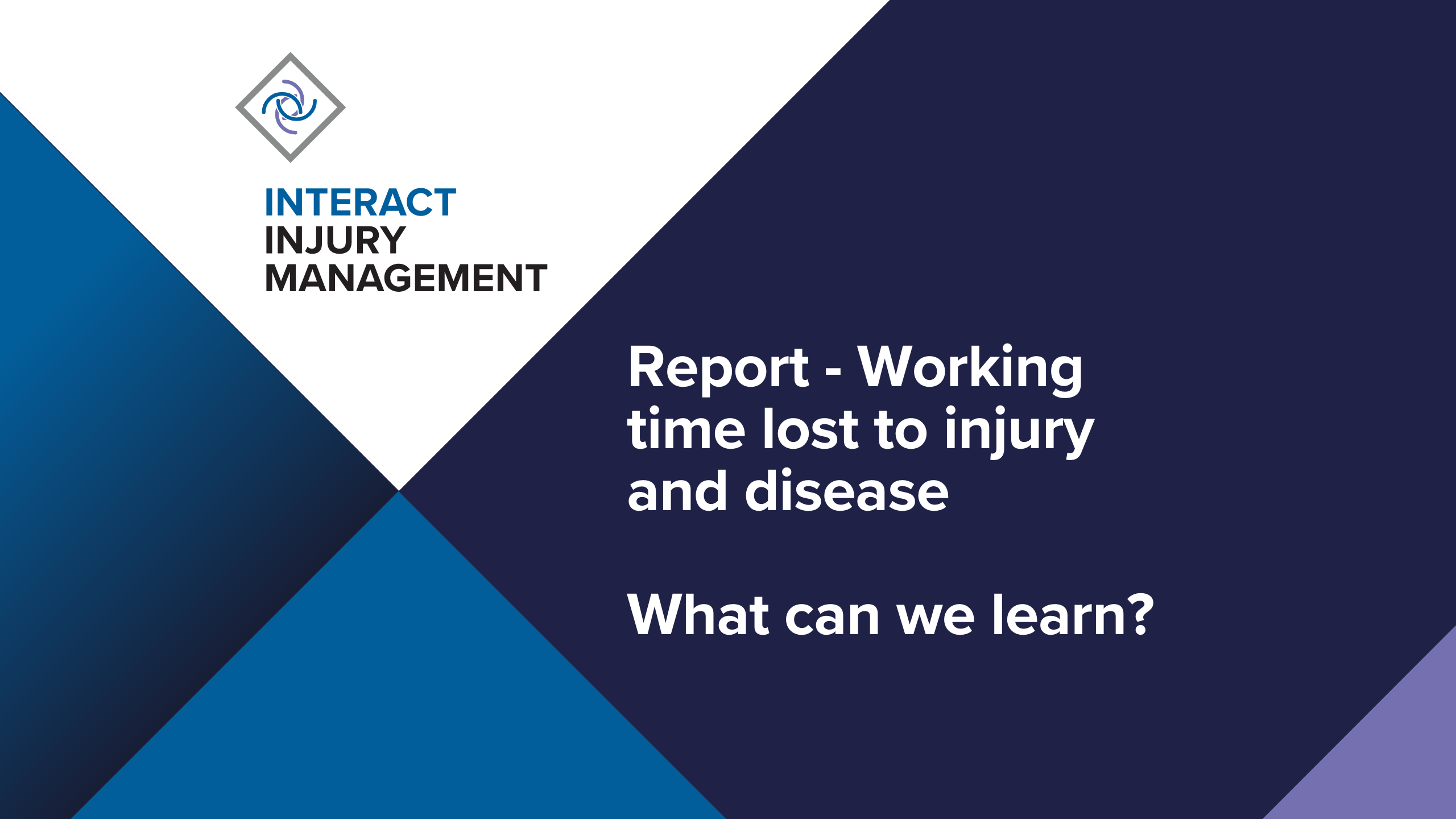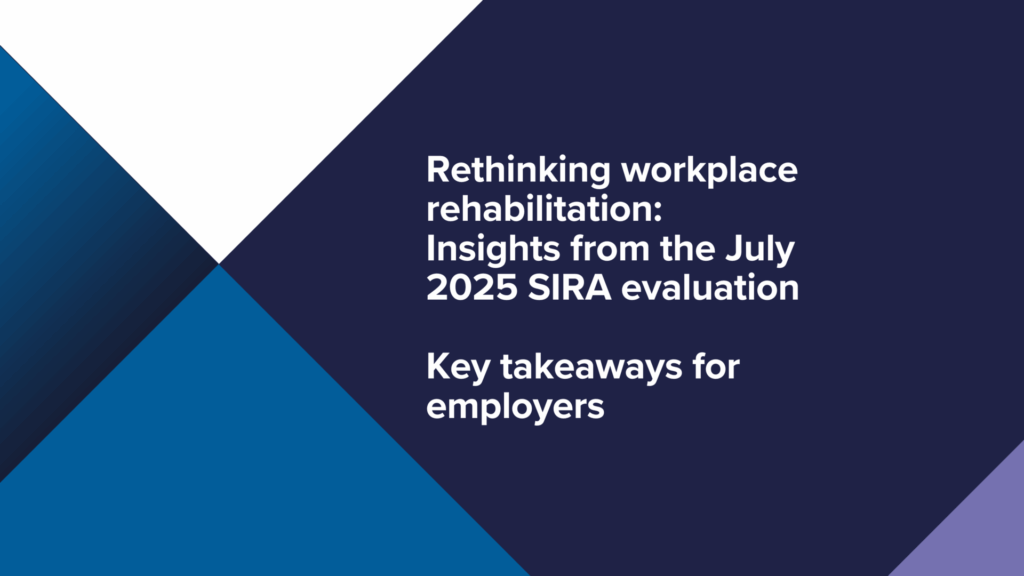Sean Betland – General Manager, Interact Injury Management
We all understand how meaningful employment is to the health of people and the communities we live in.
It’s good for our physical and mental health, keeps our healthcare costs down, and improves life expectancy.
Having said this, work environments can pose a risk to our health, with occupational injury and disease being responsible for too many deaths and disability, not to mention the economic impact.
The release of a recent study in the Medical Journal of Australia, titled: The burden of working time lost to compensable occupational injury and disease in Australia, 2012–17: a retrospective population‐based study, uncovered some valuable facts, figures, and insights.
Perhaps the most interesting is that the equivalent of over 40,000 full-time jobs have been lost each year in Australia, due to lost time injuries, illustrating the huge impact work-related injury and disease have on our workforce and productivity.
This data helps to emphasise how important occupational rehabilitation and return to work programs are to everyone’s health.
Digging down a bit further, it was also interesting to note that the types of injuries resulting in the biggest loss of working years were traumatic joint and muscle injuries (40%), musculoskeletal disorders (20.7%), while mental health conditions came in third place at 13%.
Even after many years in this industry, I still feel we can learn so much from the insights in this study, which not only improve us as occupational rehabilitation professionals but also help workplaces across Australia.
5.6% of injuries were related to mental health
Yet, it accounts for 13% of lost time
The report draws data and correlations that are more detailed than just injury rates. This is helpful as it highlights not all injuries are the same in their impact per age, gender, and work role.
Examples include the fact that while 5.6% of injuries in the review period (2012-2017) were related to mental health conditions, this accounted for 13% of lost time in compensable schemes.
In short, mental health claims result in far greater absence from work compared to other injury types.
It was also interesting to note that mental health claims were almost twice as prevalent in females than in males.
Equivalent of 41,000 full-time jobs lost per year
With a financial impact of $61.8 billion to Australia’s economy
It shines a light on workplace injuries’ sheer economic and productivity impact.
In the 2012/2013 financial year, the estimated financial impact in Australia was $61.8 Billion.
This was across an average of 150,000 claims per year and the equivalent of 41,000 full-time equivalent loss of staff/workers per year.
Chronic disease is increasing
Impacting an aging population with increased injury, illness and recovery times
The article does indicate that the growing prevalence of chronic disease is impacting the nature and prevalence of injuries and illness in the workplace.
This likely has a risk of continuing to emerge in what is an aging workforce.
This can negatively impact recovery from injuries, and the data reflects this (older workers experience longer recovery times from injuries on average).
Occupational rehabilitation and return to work programs are crucial
Better health and social outcomes for workers and benefits to workplaces
The article specifically stipulates that ‘occupational rehabilitation and programs that support return to work after injury or disease are as crucial for the health of workers as primary prevention’.
This underpins the focus and DNA of businesses like Interact Injury Management, where we strongly advocate for early intervention and support to enable recovery at work.
The evidence confirms this results in better health and social outcomes for those with injuries, as well as numerous benefits for workplaces.
Ambiguous liability decisions complicate recovery and return to work
This can place increasing financial burden on employers through higher premiums
I’d like to note that there was a statement I do not feel accurately represents the reality of the Workers’ Compensation Scheme more specifically in NSW.
The article states that ‘workers can only seek compensation for compensable conditions, not concurrent or pre-existing health conditions’ and that this can negatively impact the support available to workers they may need.
However, we have seen many examples where ‘work-related aggravations’ of pre-existing conditions are accepted in the NSW scheme, especially orthopaedic and mental health conditions.
This is complicating the recovery and return to work of many workers, creates a growing area of ‘grey’ regarding liability decisions and who should ‘fund’ support and treatment needs, and can place an increasing financial burden onto employers through higher premiums where such cases are not managed well.
In summary, this retrospective analysis helps shed more detailed light on the prevalence of workplace injuries in Australia.
But more specifically it breaks the data even further to consider the types of injuries sustained, the prevalence of these by age and gender, and the associated ‘lost time’ for each injury when factoring these variables.
It highlights that not all injuries have the same impact on recovery and by understanding these finer nuances it can help compensable schemes, employers, and other stake holders better understand where to prioritise strategies and support.
Finally, the evidence further confirms that rehabilitation and return to work support is a critical need if prevention and management of workplace injuries is to be optimised.
The earlier this support is implemented, the more likely this will result in improved recovery and return to work rates, and this is the best outcome for everyone!




